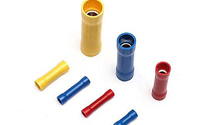Electrical Wiring 101: Understanding Insulation and Sealing Techniques
Novice DIY users need to systematically learn safety regulations to improve their household circuit skills. Mastering wire insulation, circuit breaker principles, and switchboard layout can effectively prevent short circuits and electric shock risks. From basic conductive theory to cable sealing technology, building a knowledge system in stages can ensure electricity safety.

What is a circuit and how do wires work?
A circuit is a closed conductive loop consisting of a power supply, a wire, a load, and a control device, which is used to realize the transmission and conversion of electrical energy.
As the key carrier of the circuit, the wire is a conductive metal at its core and an insulating material wrapped around its outer layer. Its working principle is: the power supply provides a potential difference, driving free electrons to move in a directional manner in the wire to form a current, and when the current flows through the load, it converts electrical energy into light energy, heat energy, etc. The switch controls the on and off of the circuit, and the wire transmits electrical energy with low loss, so that the electrical energy flows along the designed path to realize the function of the electrical equipment. The whole process follows Ohm's law, and the conductivity of the wire and the circuit structure design ensure efficient energy transmission.
Commonly used insulating materials in electrical applications:
Plastics: low cost, easy to process, widely used in the outer sheath of wires and cables, isolating conductors and resistant to daily wear, suitable for low-voltage environments.
Rubber: strong flexibility, resistant to bending, suitable for mobile equipment cables and sealed insulation, with both weather resistance and insulation.
Ceramics and glass: resistant to high temperature and high pressure, often used as insulators for high-voltage transmission lines or insulation components for electric furnaces, can stably isolate conductors in harsh environments and ensure the safety of high-voltage systems.
How to insulate, strip and connect wires
Stripping: Use wire strippers or cutters to adjust the stripping length according to the thickness of the wire, gently clamp the insulation layer and rotate it to tear it off to avoid damaging the conductor.
Connection: Twist the wires tightly by twisting, or fix them with tools such as terminal blocks and crimping caps to ensure good contact; single-strand wires can be directly inserted into the terminal holes, and multi-strand wires need to be twisted into strands before connection. If necessary, weld to enhance conductivity.
Insulation: Use insulating tape to wrap from the insulation layer of the wire to the connection to completely cover the exposed conductor; in humid environments, connectors or waterproof tape can be used to strengthen protection. Finally, check that there is no exposure and no looseness. Power off before operation to ensure safety.
Importance of Sealed Electrical Connections for Safety and Reliability
Sealed electrical connections are critical to safety and reliability. They prevent the intrusion of moisture, dust, and corrosive gases, prevent oxidation of conductors, aging of insulation layers, and reduce the risk of short circuits and leakage, especially in humid and dusty environments, which can effectively prevent arc discharge or equipment failure. At the same time, sealing ensures long-term stable conductivity of the connection parts, reduces heating problems caused by excessive contact resistance, extends the life of the electrical system, and ensures the continuous and safe operation of the equipment. It is a key link in preventing electrical accidents.
Contact Us
If you need electrical products, we've got you covered. Browse our wide selection of high-quality connectors and tools to find the right product for your needs. You can visit our resources page for more information and guidance on electrical.




